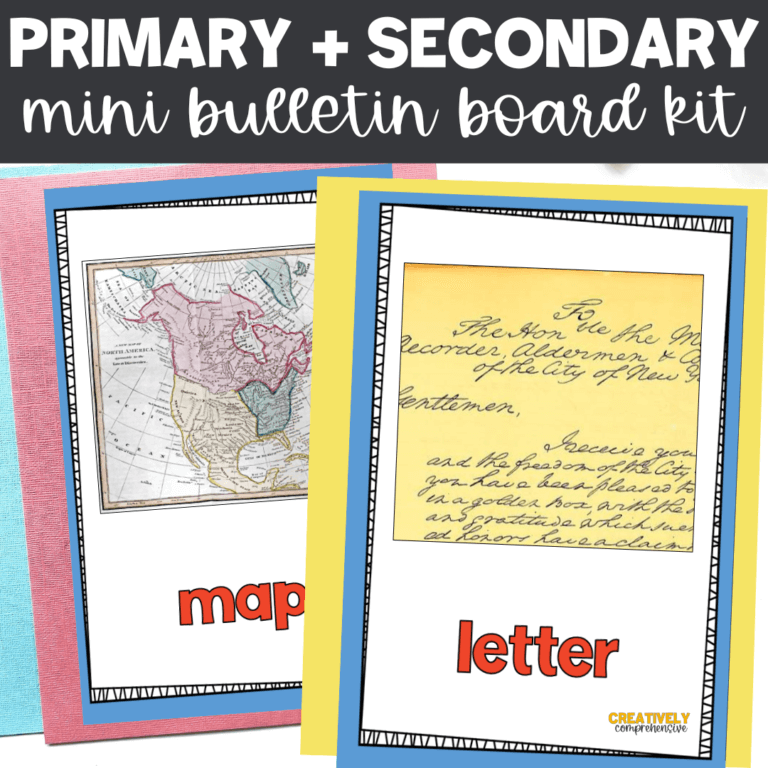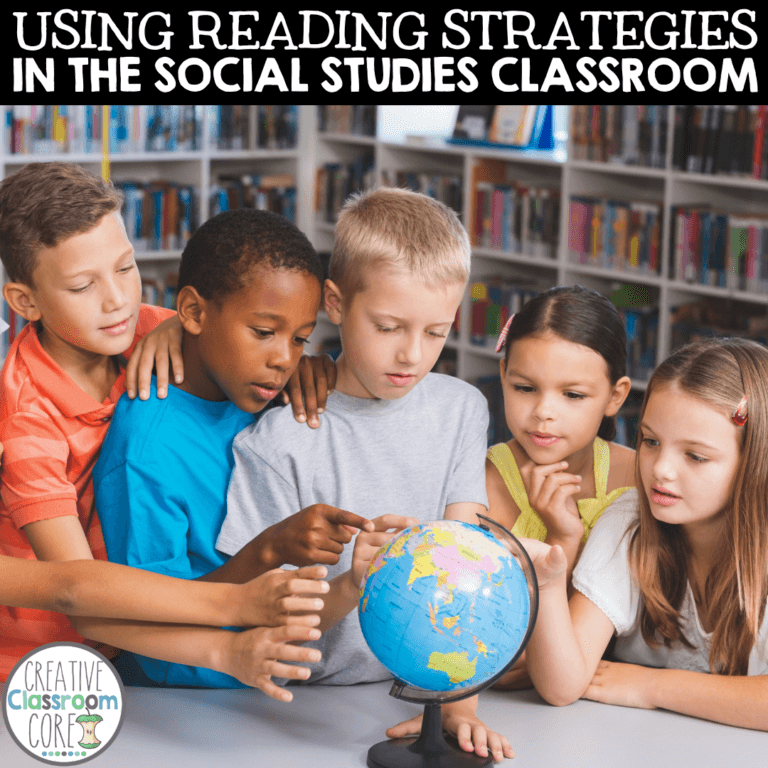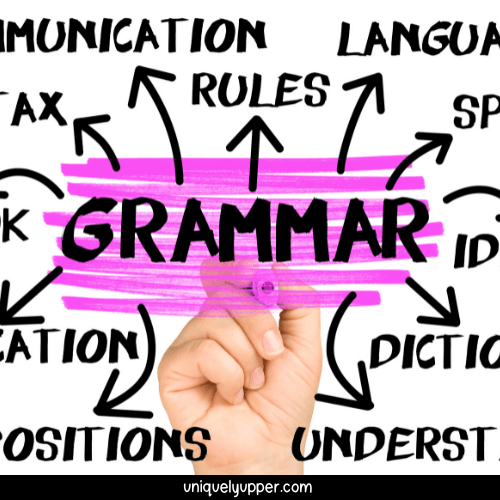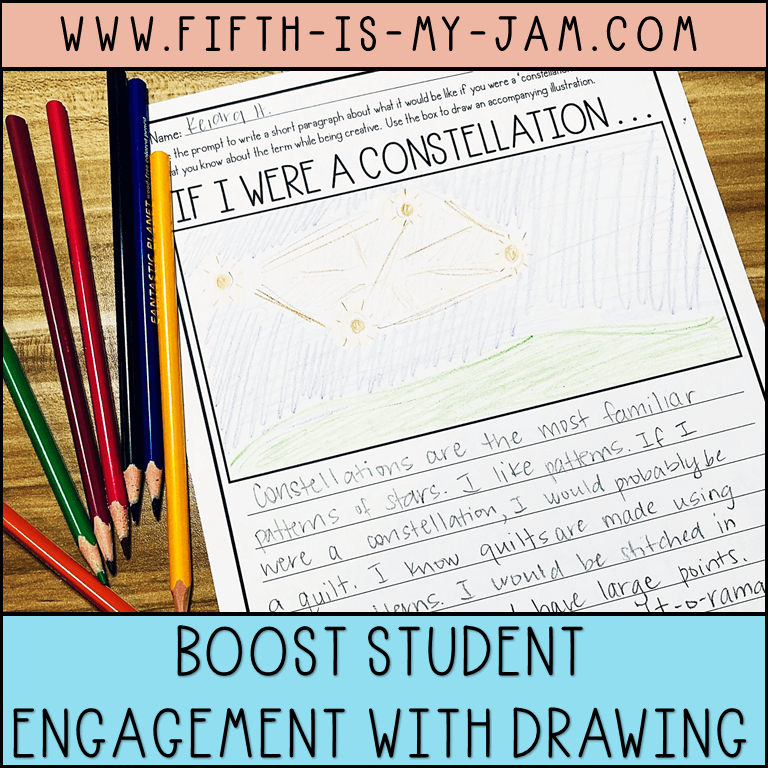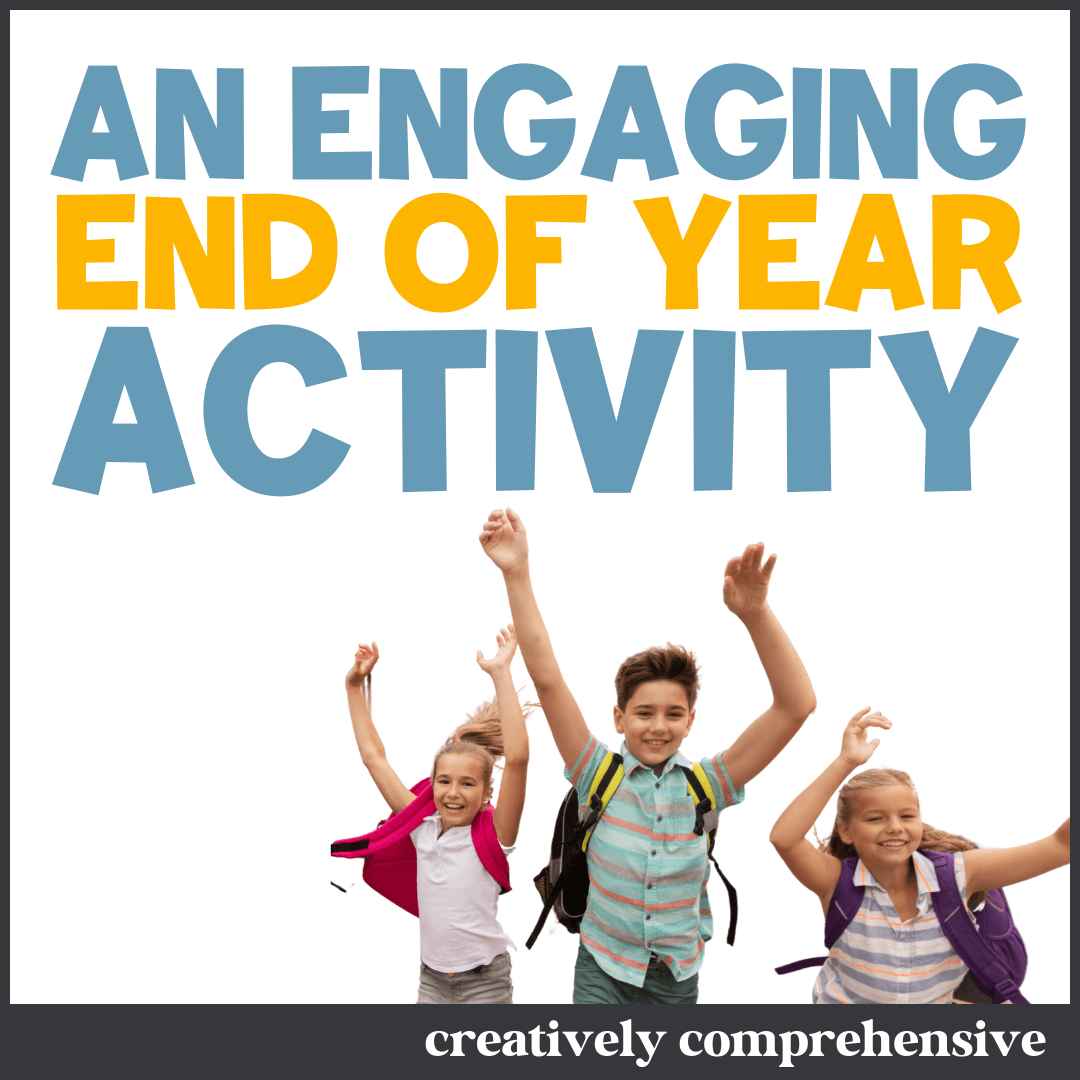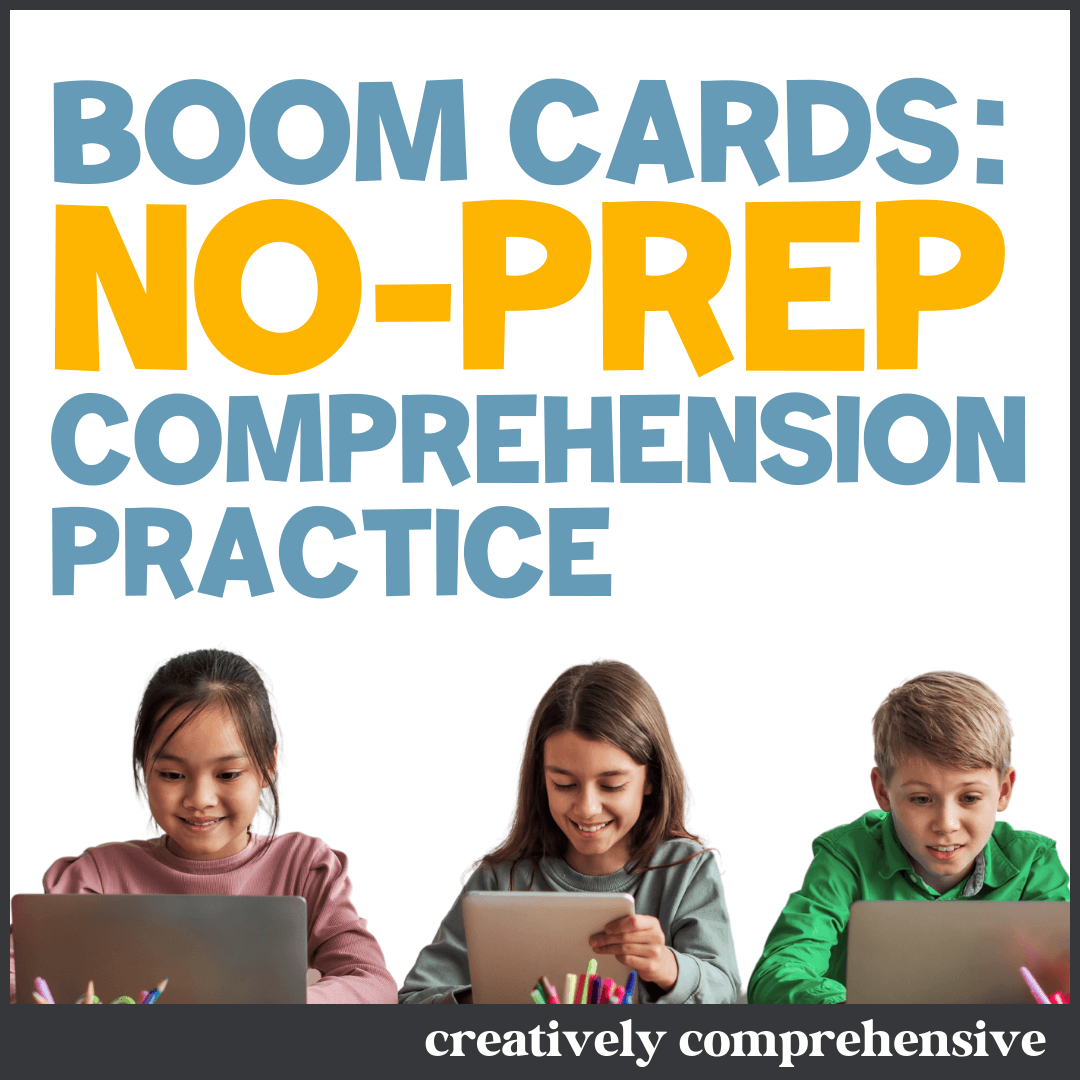By Marianna Monheim, Marissa Despins, Rachel Deroche, Rissa Hannekin, Rach Jamison, and Tanya G. Marshall– Updated December 17th, 2023
Table of Contents
Get Students to Apply Reading Strategies, No Matter the Subject
In this post, I’ll be sharing ideas from an awesome group of upper elementary content creators. We’re dropping our best ideas for helping students apply reading strategies to other content areas. Hopefully you’ll pick up a few new tricks!
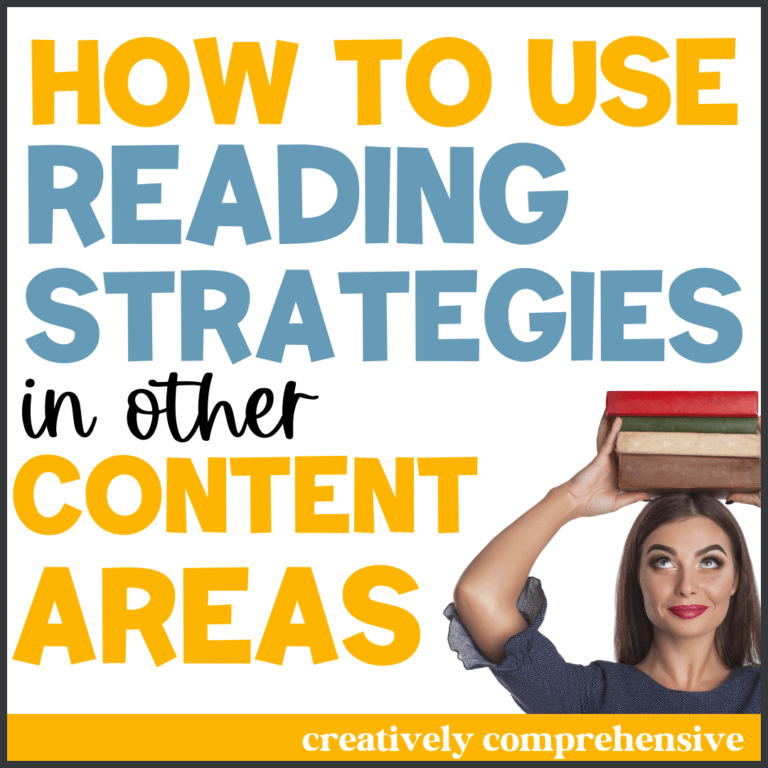
Utilize Primary Sources
Historical fiction is a very popular genre on standardized tests, but oftentimes our students don’t have the background knowledge to provide the necessary context for comprehension. Pairing primary source materials with historical texts can help students gain a stronger understanding of the time period they are reading about.
This integration of primary and secondary source material can be a powerful way to engage students in history…when done correctly. Always view primary sources beforehand and decide if the full document is needed for context, or if an excerpt will do. Additionally, give students the necessary scaffolding to decode and understand these texts. If you’re new to using primary sources, the Library of Congress has a great page devoted to using primary sources in your classroom.
Of course, visuals help when learning about types of sources! Grab a set of free Primary and Secondary Source Posters to create a reference board in your classroom.
Marissa from Creative Classroom Core believes that incorporating reading strategies into other subject areas, such as social studies, offers numerous benefits for students’ holistic learning and skill development. By applying strategies like visualizing, questioning, and predicting, students can better grasp complex texts commonly found in social studies materials, enhancing their comprehension skills. Reading skill integration promotes critical thinking, encouraging students to question, evaluate evidence, and draw informed conclusions in historical, government, and cultural contexts. Additionally, it contributes to vocabulary and language development, as students encounter discipline-specific terminology and historical context. Interdisciplinary learning fosters a sense of interconnectedness between subjects, highlighting the real-world applicability of their education. Marissa strongly believes that incorporating reading strategies into social studies and other subjects empowers students with the tools to become more proficient readers, critical thinkers, and informed citizens, ultimately enriching their academic experience and preparing them for a well-rounded education. Read more tips and tricks for building reading comprehension strategies on the Creative Classroom Core blog.
Rachel from Uniquely Upper believes that incorporating reading strategies in grammar enhances students’ ability to decipher and decode their learning. Using reading strategies with grammar involves applying specific techniques and skills to enhance students’ understanding of written texts. These strategies are essential for improving language proficiency and overall reading comprehension.
Effective readers employ contextual clues to determine the meanings and functions of unfamiliar words and grammatical structures. They identify parts of speech within sentences, which helps in understanding how words contribute to the overall meaning of the text.
Analyzing sentence structures provides a deeper insight into the relationships between different elements within a sentence. Being familiar with grammar rules and conventions allows readers to spot errors or inconsistencies in a text.
Actively engaging with the text through annotation, like underlining key grammatical elements and making notes about unfamiliar vocabulary, enhances understanding and retention. Close reading and analyzing the text can help students understand complex grammatical structures better and clarify the author’s intended message.
By incorporating these reading strategies, individuals improve their language skills and deepen their understanding of texts, enabling them to interpret written content better and become more effective readers and communicators. If you want to learn more about incorporating grammar into your classroom, check out Uniquely Upper’s blog.
Rissa Hanneken, from Teaching in the Heart of Florida, loves to integrate close reading strategies into Social Studies to enhance student engagement and comprehension. Her approach begins with setting a purposeful intention for reading, allowing students to focus on the text’s main ideas. She encourages note-taking to connect with the material actively, and vocabulary work is emphasized through the use of context clues. By incorporating these techniques, Rissa ensures that her students don’t just learn facts but develop a deeper understanding of Social Studies content, laying a foundation for informed citizenship while strengthening their close reading skills. Rissa integrates these strategies into guided reading lessons as well which builds Social Studies reading comprehension. Read more about using close reading strategies with Social Studies text at the Teaching in the Heart of Florida blog.
Rach from Fifth is my Jam believes it is super important to continue to build upon your students’ skills in reading. She shares a fun strategy she uses to encourage her students to build upon their research and reading skills. Cue the art show – Rach says her students really love learning about a specific topic and then drawing what they learn, but putting themselves in the shoes of the subject they are researching or reading about. She has been using the art of drawing for years and uses it with each new unit she teaches. These “If I Were . . .” pages are so much fun and awaken a side of comprehension students can smile about. Read more here about how to get your students started with their research and reading skills through the use of art!
Fractions can be a tricky concept for big kids to grasp, but with the right tools, they can be much easier to understand. Enter fraction read-alouds! Tanya The Butterfly Teacher thinks using math books to introduce concepts connects the best of two worlds. Reading skills + math skills = empowered students! This is a great way to get your kids excited about fractions to help them understand the concept more easily, while also practicing their reading. She’s compiled a list of her top 15 favorite Fraction Read-Alouds for Big Kids. From silly stories to clever rhymes, these books are sure to make fractions fun. You can use them to highlight reading skills such as inferencing, defining words using context clues, making predictions, and asking questions. But you don’t have to stop there! Several of the books Tanya recommends also touch on equivalent fractions, identifying fractions using area models, and more! Not only that, but Tanya believes that using math books also reinforces upper elementary students’ ability to master math word problems. When you visit her post to see the line-up of fraction books, you can also grab a FREE fractions PowerPoint lesson to use with your kiddos.

